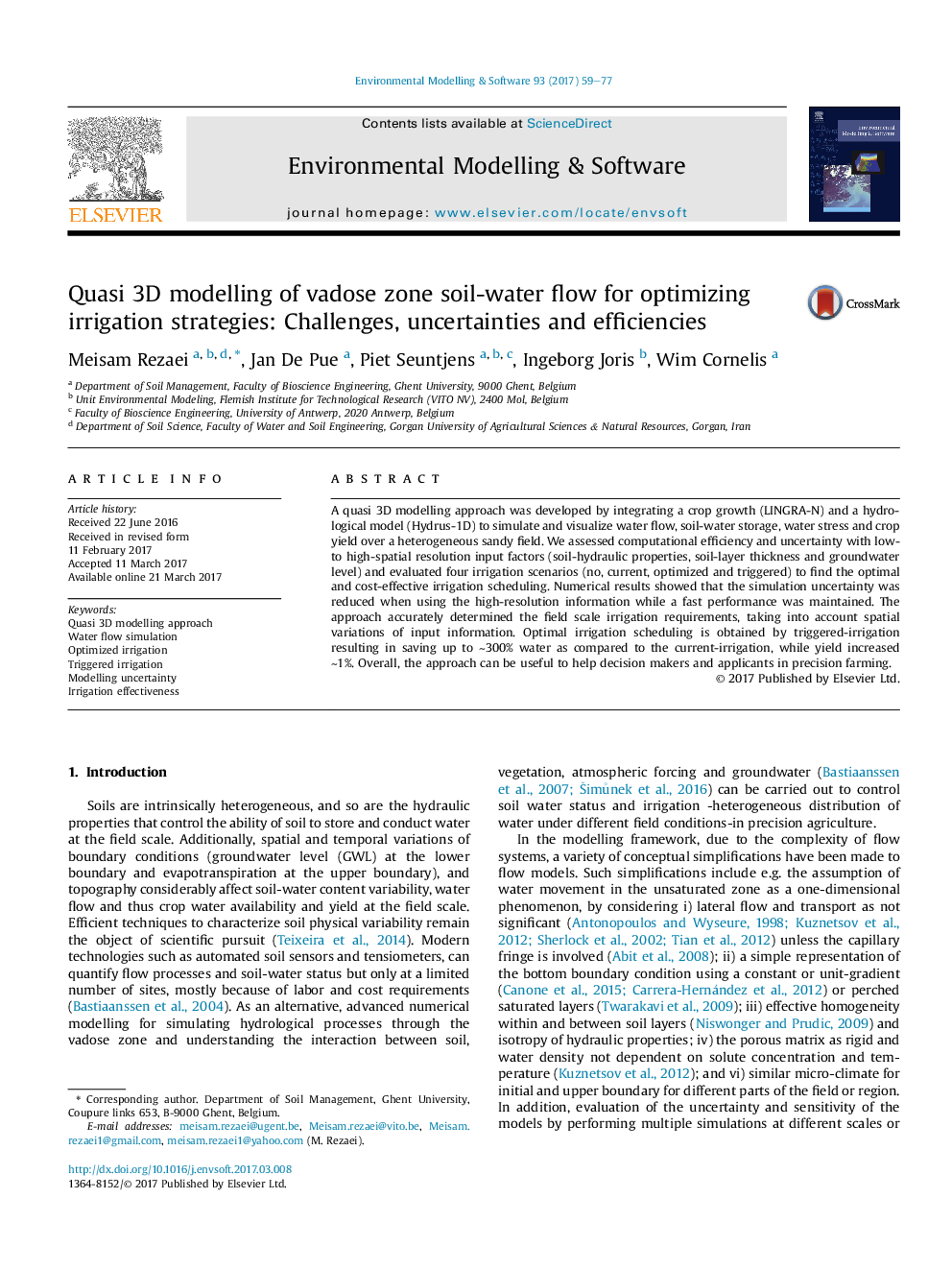| Article ID | Journal | Published Year | Pages | File Type |
|---|---|---|---|---|
| 4978078 | Environmental Modelling & Software | 2017 | 19 Pages |
â¢We developed a quasi 3D modelling approach to simulate the field scale water flow.â¢The approach reproduced high resolution spatial patterns/data of water status.â¢The uncertainty in model output was reduced by using the high-resolution information.â¢The approach can accurately determine the field scale irrigation requirements.â¢The approach can help decision makers and applicants in precision irrigation/farming.
A quasi 3D modelling approach was developed by integrating a crop growth (LINGRA-N) and a hydrological model (Hydrus-1D) to simulate and visualize water flow, soil-water storage, water stress and crop yield over a heterogeneous sandy field. We assessed computational efficiency and uncertainty with low-to high-spatial resolution input factors (soil-hydraulic properties, soil-layer thickness and groundwater level) and evaluated four irrigation scenarios (no, current, optimized and triggered) to find the optimal and cost-effective irrigation scheduling. Numerical results showed that the simulation uncertainty was reduced when using the high-resolution information while a fast performance was maintained. The approach accurately determined the field scale irrigation requirements, taking into account spatial variations of input information. Optimal irrigation scheduling is obtained by triggered-irrigation resulting in saving up to â¼300% water as compared to the current-irrigation, while yield increased â¼1%. Overall, the approach can be useful to help decision makers and applicants in precision farming.
